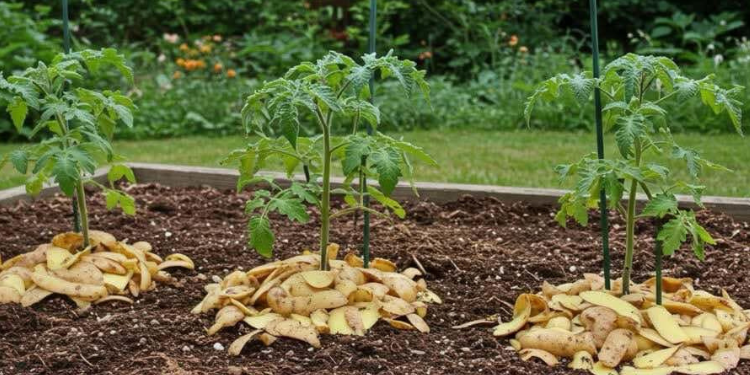Instead of tossing potato peels into the trash, you can reuse them to enrich your soil, nourish plants, and even save money on fertilizers.
Potato peels are packed with essential nutrients like nitrogen, potassium, phosphorus, and magnesium, making them an excellent organic addition to any garden.
In this guide, you’ll discover how to use potato peels as a natural fertilizer, compost booster, and even a pest deterrent – helping you create a more sustainable and thriving garden.
Why Use Potato Peels in the Garden?
Potato peels contain vital nutrients that promote plant growth, including:
- Potassium (K) – Essential for root and flower development.
- Phosphorus (P) – Encourages healthy root systems and fruit production.
- Nitrogen (N) – Supports leafy green growth and overall plant health.
- Magnesium & Calcium – Strengthen cell walls, improving plant resilience.
By recycling potato peels, you can improve soil fertility, reduce food waste, and cut down on chemical fertilizers.
How to Use Potato Peels to Nourish Soil & Plants
There are several easy and effective ways to use potato peels in your garden. Let’s explore the best methods.
1. Make a Nutrient-Rich Potato Peel Fertilizer
Potato peel fertilizer is a great way to boost plant growth without spending money on store-bought fertilizers.
How to Prepare Potato Peel Fertilizer:
- Collect potato peels and allow them to dry completely (sun-drying or oven-drying works best).
- Once dry, grind them into a powder using a blender or food processor.
- Mix the powdered peels into water and let them steep for 24 hours.
- Use this nutrient-rich water to water your plants once a week.
Best Plants to Use It On: Tomatoes, peppers, roses, and leafy greens.
2. Add Potato Peels to Your Compost Bin
Potato peels break down quickly and are a valuable addition to compost bins. They speed up decomposition and provide much-needed moisture and nutrients.
How to Compost Potato Peels Properly:
- Chop or shred the peels into smaller pieces to accelerate decomposition.
- Mix them with dry brown compost materials (like leaves or cardboard) to balance nitrogen and carbon levels.
- Keep the compost pile aerated by turning it regularly to prevent mold growth.
Caution: Avoid adding potato peels if your compost bin doesn’t reach high temperatures, as they may carry fungal spores like blight.
3. Directly Bury Potato Peels in the Garden
Burying potato peels directly in the soil creates a natural slow-release fertilizer. As the peels decompose, they enrich the soil with nutrients and organic matter.
How to Use This Method:
- Dig a shallow trench 2-4 inches deep in your garden bed.
- Place the potato peels inside and cover them with soil.
- Water lightly to help decomposition begin.
Best Areas to Use This Method: Vegetable gardens, fruit tree bases, and flower beds.
Tip: To prevent rodents from digging them up, bury peels deeper or mix with other organic matter.
4. Make a DIY Liquid Fertilizer from Potato Peels
Potato peel tea is an easy-to-make liquid fertilizer that provides plants with quick-access nutrients.
How to Make Potato Peel Tea:
- Boil potato peels in water for 15-20 minutes.
- Let the water cool completely.
- Strain out the peels and pour the nutrient-rich water around your plants.
Best Plants for Potato Peel Tea: Houseplants, flowering plants, and fruiting vegetables.
5. Use Potato Peels as Mulch for Soil Moisture Retention
TO CONTUNUE READING THE ARTICL PLEASE SEE PAGE 2 .




